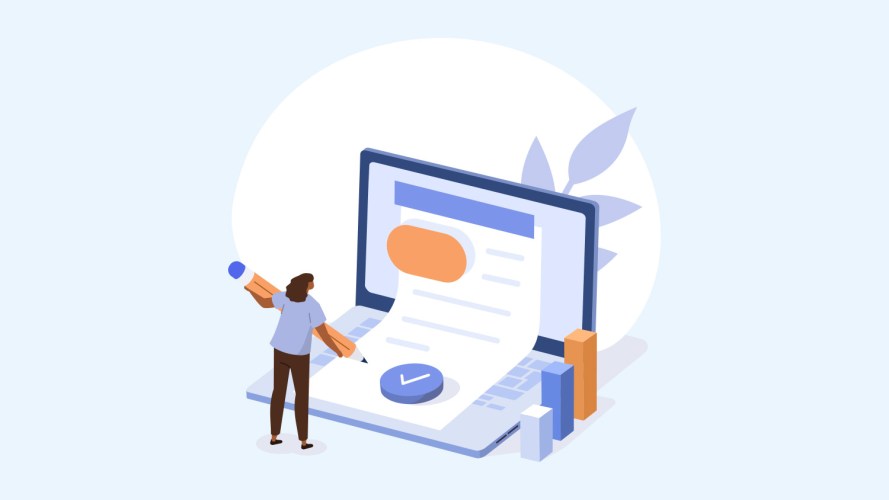3 Ways Better Technology Can Transform Government

People expect government services to have the same ease of use as the big brands they know and love. What does this mean for the public sector customer experience?
We now have the world at our fingertips — thanks to digital platforms. We can hail a ride, pay friends back through Venmo, have groceries delivered instantly, and find answers to almost anything with AI. Technology has created a remarkable interconnectedness with services that people experience each day. Now comes the pressing issue for the public sector: how can government technology deliver an experience like the private sector?
So much technology today is on-demand and accessible. As more users flock to these technologies, they improve as they gather more data to improve style and functionality, better anticipate needs, and create more targeted and personalized experiences. This constant improvement cycle leads citizens to have increasing expectations with government technology.
Here’s your opportunity to build trust
Citizens want government organizations to provide more of their services online. Learn how you can meet these expectations and deliver for your constituents.



Because services delivered by the public sector touch so many aspects of people’s lives, the impact of engaging with older, disconnected systems can often create mass-scale frustration.
Constituents expect access to user-friendly platforms in every aspect of their life. This puts pressure on government technology to keep up with innovative consumer experiences typical in the private sector.
Now that consumers can order groceries, conduct financial transactions, and even receive medical evaluations online, they want the government to provide a similar level of services. Notably, trust in government increases when digital experiences meet their expectations.
The current digital environment has underscored the importance of engagement — and how governments interact with their constituents. They must accelerate digital transformation with the latest scalable technologies to provide long-term benefits. These are three key areas where government technology can transform experiences for its citizens:
1. Digital constituent and customer experience
Paper-based processes are slow, allow for significant duplication of work, room for errors, and they often involve more steps than necessary. When public servants are forced to spend significant amounts of time re-keying information from paper applications into legacy systems, in-person services and field offices become slow and difficult to scale across every service capability. Using digital solutions that are responsive and easy to navigate is critical in providing accurate, fast, and trusted government services.
Delivering personalized, targeted, and customer-focused experiences helps increase trust and satisfaction. For example, delivering benefits to qualified applicants can go from cumbersome and paper-based to a seamless, dynamic digital experience.
By creating a single portal where applicants and clients can log in, access services, and get real-time updates, agencies can offer transparency and deliver faster reviews or faster disbursement of funds. This reduces the administrative burden on both constituents and government reviewers.
For instance, what if applicants only needed to fill out relevant information once, and it could be translated across multiple applications? Research shows that about 40% of people eligible for supplemental nutrition assistance programs were deterred by the paperwork involved. Many also found the application too time-consuming.
By reducing burdens on eligible people, your government programs can have a greater impact. You could streamline the whole experience — from intake to outcome.
Reimagining service engagement through a customer-first lens can offer constituents the ease and simplicity they experience from private sector services. Not only will this improve their overall experience, but it will build trust in knowing the government can deliver customer-centric service.
Sending help to families faster
See how the Wyoming Department of Family Services makes its services easy-to-access and efficient.



2. Automation in government technology
Today’s “do more with less” world requires agencies to scale processes efficiently and quickly to effectively serve constituents and meet mission demands. Public sector organizations can use automation to eliminate manual tasks, scale services quickly, and optimize complex processes.
But sometimes automation can be seen as too difficult to implement or something that requires highly technical resources, which are tough to come by! In reality, when it comes to automation, digital transformation does not have to be complex or require significant investment.
Public sector organizations can automate tasks with no code or low code tools that help productivity across any system. For example, agencies can automate eligibility determinations — even complex programs like energy assistance and emergency housing assistance.
Before, public servants would have to manually perform complex calculations to determine if someone is eligible for a benefit, searching for data across siloed systems and then manually quantifying the amount of the benefit. This method is error prone and takes time.
Now, public servants can simply have an automated process perform the calculation to determine eligibility, while they focus on higher order tasks.
This helps people in need faster while also helping to ensure no steps are missed in qualifying applicants. For example, optical character recognition can turn paper forms into digital records with a few clicks, helping to reduce data entry errors and administrative burdens.
3. Data-driven decision-making
Public sector organizations have great potential to use rich data to help them make decisions — but they must solve several data-related challenges. The data must be complete, accurate, and dynamic. Additionally, data must be accessed from disparate data sources and in real-time.
Public sector organizations can use government technology to identify patterns and use visualizations to reveal insights. Behind the scenes, these solutions aggregate data across programs, services, or records. By using capabilities like business analytics and machine learning, they provide actionable insights to agency leaders or enable employees to make personalized and real-time informed decisions.
The most critical currency within the public sector is trust. If you envision trust as a coin, one side spells “transparency,” and the other spells “accountability.”
Given the maturity of information technologies, government agencies should leverage the power of software tools with built-in automation to build that required trust quickly — while also meeting their respective missions.
Kicking off the next phase of your digital transformation can be a considerable task for any organization. That said, innovation presents an incredible opportunity for the public sector to reimagine the delivery of its mission.
Meet mission success on time
See how you can serve your people faster, with out-of-the-box applications designed for government digital service delivery.




























